
Who Were
The Cambs
The Cambs
at War
1/1st Btn 1914-1919
1914 - 1/1st Overview
1915 - 1/1st Overview
1915 - St Eloi
1915 - Fosse Wood
1916 - 1/1st Overview
1916 - The Schwaben
1916 - St Pierre Divion
1917 - 1/1st Overview
1917 - St Julien
Insignia, Medals & Books
Remembering The Cambs
Biographies
About Us &
This Site
Defending Voormezeele - 1st April to 8th May 1918
On April 1st, 1918 the remnants of the 1/1st Battalion, Cambridgeshire Regiment, mixed in with the survivors from the other battalions that made up the 39th Division, slowly marched away from the Somme. The next 11 days were spent marching, training and resting. Gradually more of the men separated from the Battalion or wounded during the March fighting withdrawal rejoined their comrades, however the Battalion was still seriously understrength.
The massive scale of losses sustained in late March across the BEF had totally overwhelmed the supply of fresh replacements. As an emergency measure many battalions were combined with others from their division to form temporary Composite Brigades. The men of the 1/1st Cambs, along with men from the 4/5th Black Watch and 1/6th Cheshires now formed the 4th Battalion, 39th Division Composite Brigade, under the command of Lt Col Saint DSO.
With the German offensive on the Somme now stalled, their attention switched to the north and once again the old battered landscape around Ypres and the Messines Ridge became the focus of heavy fighting. This new phase of the German offensive cut short any chance of rest for the men of the Cambs and late on April 11th the Battalion arrived at Dominion Camp, south west of Ypres. Four days later the men moved into Voormezeele and were ordered to fortify the village. No. 4 Battalion, which included most of the Cambridgeshires, was given the task of fortifying and defending the village itself and the ground to the east. Abandoned trenches, dug during the fighting in 1915, were improved and new trenches dug, but as these defences would be impractical in the village key buildings were selected and turned into blockhouses. The ground around Voormezeele was actually well-known to some veteran Cambridgeshires, who had first served in the area shortly after arriving on the Western Front in early 1915.
It was made clear to all that the situation was, once again, critical and resources were stretched thin – any German push south of the Salient must be halted at this line at all costs. Over the next week a detailed plan of defence for the village was carefully drawn up. This plan was built around an adaptation of the overall ”defence in depth” strategy and consisted of a series of strong points and outposts in front of the village, followed by blockhouses in the village and trenches to either side. In front of the 39th Composite Division’s positions was a lightly held series of outpost lines up on the Messines Ridge. If the Germans attacked in strength in this region this outpost line was not expected to stop them, instead it was meant to slowly fall back off the ridge after inflicting as many casualties on the attackers as it could.
On April 20th, Lt Col Saint, suffering from fatigue after his superb command of first the Cambridgeshires, then the Brigade the previous month was ordered back for a rest and command of No. 4 Battalion was given to Major Frank Naden DSO MC of the Cheshire Regt. Over the previous few weeks around 100 other ranks had arrived from England and more of those wounded in March returned to reinforce the Cambridgeshires. There was however still a severe shortage of officers and on 21st and 24th April a total of 22 junior officers arrived from the Cambs’ Reserve Battalions. For most of these replacement officers this was their first time on the Western Front and while keen they were inexperienced. On arrival at Voormezeele they were immediately posted to various platoons in No.4 Battalion and many now found themselves in command of battletested men of the Black Watch or Cheshires.
At 2.30am, April 25th, the Germans renewed their offensive and began an intense bombardment of Voormezeele and the surrounding positions. Countless gas shells fell on the village and by dawn it became clear that a large German push on Kemmel, several miles to the south, was underway. Soon the last of the troops that had been holding the outpost line on the ridge in front of the 39th Comp Divs line were falling back and the men of the Cambridgeshires and their comrades were now the main front line. Throughout the day fighting raged off to either side of the men holding Voormezeele and news from Kemmel was not looking good.
As night fell most of the fighting died down but all ranks knew that the morning would bring fresh attacks. At 5am, under a heavy morning fog, the Germans attacked again. The men of No. 2 Battalion, mostly men of the Gloucestershires and Royal Sussex, who were to the east of the Cambridgeshires, took the brunt of the attack and considerable ground was lost. To the west, No. 1 Battalion, now commanded by Major Clayton of the Cambridgeshires, also lost ground but much of this was retaken by counterattacks. By late morning the attacks on Voormezeele itself intensified and one of the forward posts was overrun but soon recaptured. It was during this period of intense fighting around the village that the Cambridgeshire's Medical Officer, an American doctor called 1st Lt James Clinton, distinguished himself on numerous occasions. His gallant actions saved multiple wounded men and resulted in the award of the Military Cross, his impressive citation reading:
For conspicuous gallantry and devotion to duty at Voormezeele from 25th to 28th of April 1918, whilst regimental medical officer continuously evacuating and attending to the wounded under very heavy shell fire. He also, in the absence of stretcher bearers, crossed a road swept by machine-gun fire and enemy barrage and attended to a wounded man in the open. While attending to this man, two stretcher bearers carrying a wounded man were wounded by a shell. He brought in all four himself. Later, during operations when our first line had been pushed back and the enemy were within a few yards of our aid post, he personally organised the removal of nine stretcher cases and himself assisted to carry the last stretcher. He showed the greatest coolness and gallantry throughout the whole of the operations.
By the afternoon of the 26th fighting had died down around Voormezeele, although sporadic shelling of the village continued. In the late afternoon the Lewis gunners of No. 4 Battalion shot down a German aircraft, giving the men a much needed moral boost after what had been a very trying day. The defences in and around the village, held by No. 4 Battalion, were holding firm, but the ground to either side was now looking vulnerable. The left flank of the Battalion, which was holding the vital field between the village and Lock 8 on the Ypres-Comines Canal, looked the most vulnerable and was reinforced by the few survivors of the battered No. 2 Battalion.
Dawn on 27th April brought yet another deluge of German artillery fire on the village and the positions to the east, however, unlike the previous morning, it was now the men of No. 4 Battalion that faced the brunt of the infantry attacks. For most of the day fighting raged from building to building and by 3.20pm the Germans had reached the centre of the village. A determined counter attack an hour later pushed them back, but casualties were mounting and the men of No. 4 Battalion were exhausted. Orders finally came through late in the day that the Battalion was to be relieved during the night.
The planned relief of the men of No. 4 Battalion did not go smoothly. Despite the darkness, fighting in the village continued and the central strong point, recaptured in the afternoon’s counter attack, was lost once again. Off to the east, the left flank Company of No. 4 Battalion, holding the positions around Lock 8, was in danger of being surrounded. Unfortunately for these men, the relieving unit was unable to get men to their position and it was agreed that they would remain till the following night.
As dawn broke on April 28th the bulk of the survivors of No. 4 Battalion moved into positions in the GHQ Second Line, some 1500 yards behind the front. Soon the sounds of heavy fighting broke out all along their old positions, a great deal of which seemed to be focused on their unfortunate comrades, including some Cambridgeshires, still holding the positions around Lock 8. When these men finally withdrew the Company, that had numbered nearly 120 men, had been reduced to only 35.
Late in the afternoon of April 29th the exhausted men of No. 4 Battalion arrived at Dominion Camp. The 39th Division Composite Brigade was in tatters and on May 1st the survivors of the four Composite Battalions were reorganised into two, with the Cambridgeshires now part of Number 2 Composite Battalion, under Major Clayton DSO. Despite the exhausted state of all ranks there was still a very real threat of further German breakthroughs, so the Battalion was kept at a state of readiness. Finally, on May 5th, with the situation more stable, orders came through that they were to leave the Ypres Salient. The following morning, after a short train journey, they arrived at Watten, south east of Calais where the 39th Division Composite Brigade was disbanded and the men reverted to their old battalions. The 1/1st Battalion, Cambridgeshire Regiment marched from Watten to billets several miles to the north west at Ruminghem.
The disbanding of the 39th Division Composite Brigade also spelt the end for the 39th Division as a fighting unit. Like many divisions shattered by the German Spring Offensive, the number of reinforcements needed to bring it back up to strength was too great. Orders came through that the Division was to reduce to a cadre and assist with the training of American troops. Just as it had in November 1915 when the 1/1st Cambs left the 27th Division, this brought about all manner of rumours regarding the future of the Battalion. After several days resting at billets in Ruminghem this big question was answered – the 1/1st Battalion, Cambridgeshire Regiment was joining the 12th Division and their future as a front line battalion was saved.
Brigadier General Hubback, writing in the official report of the 39th Division Composite Brigade’s action in April 1918, stated:
I desire to place on record my appreciation of the fine fighting spirit shown by the units of the Composite Brigade. The calls made upon them were many and severe, but they responded in every case with the greatest gallantry.
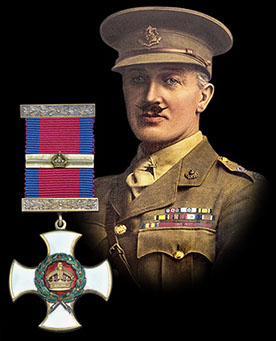
Major Naden, awarded a Bar to his DSO for his command of No.4 Btn at Voormezeele.
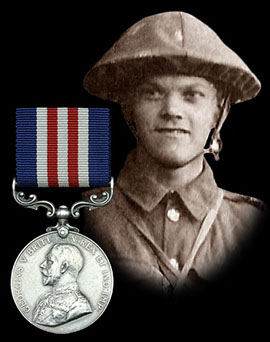
Thomas Burrow MM, from Barrow-in-Furness, wounded during the fighting.
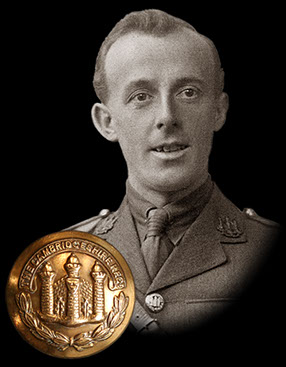
Lt Cowling, one of the replacement junior officers, was KiA by shell fire at Voormezeele.
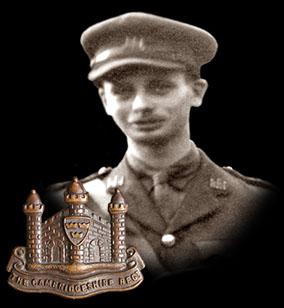
Lt Rolfe, another of the recently arrived junior officers, was taken PoW April 26th.
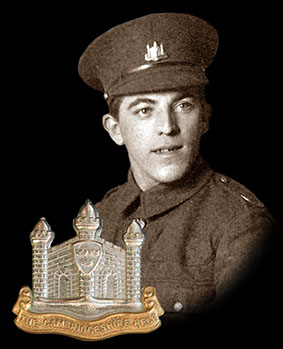
Robert Leeds, from Cambridge, mortally wounded during the fighting at Voormezeele.

This site went live on the 14th February 2015 to mark 100 years since the 1/1st Cambs went off to war.
WE WILL REMEMBER THEM
Email us: cambsregt@gmail.com
Copyright 2015, 2016, 2017, 2018, 2019 by Felix Jackson. The information and images on this site should not be reproduced without prior permission.